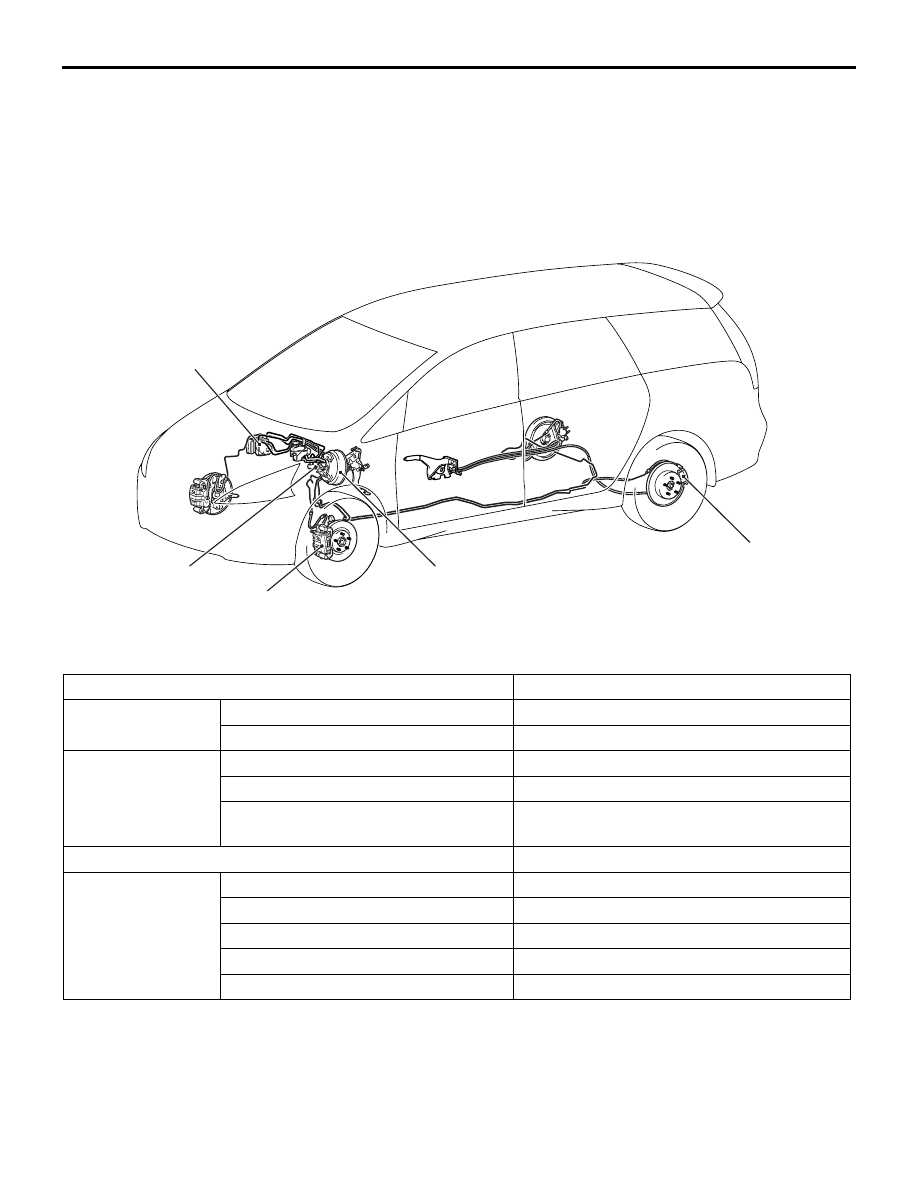Mitsubishi Grandis. Manual - part 890

GENERAL INFORMATION
BASIC BRAKE SYSTEM
35A-2
GENERAL INFORMATION
M1351000100547
The brake system has been designed to give greater
reliability and durability and to provide excellent
braking performance.
CONFIGURATION DIAGRAM
SPECIFICATIONS
AC312153
Brake booster
Rear disc brake
Master cylinder
Front disc brake
Hydraulic unit
AC
Item
Specification
Master cylinder
Type
Tandem type
I.D. mm
25.4
Brake booster
Type
Vacuum type, tandem
Effective dia. of power cylinder mm
205 + 230
Boosting ratio
8.5 (pedal pressure: 60 N)
10.5 (pedal pressure: 110 N)
Rear wheel hydraulic control method
Electronic brake-force distribution (EBD)
Front brakes
Type
Floating caliper, 2 piston, ventilated disc
Disc effective dia.
× thickness mm
241
× 26
Wheel cylinder I.D. mm
45.4
× 2
Pad thickness mm
10.0
Clearance adjustment
Automatic